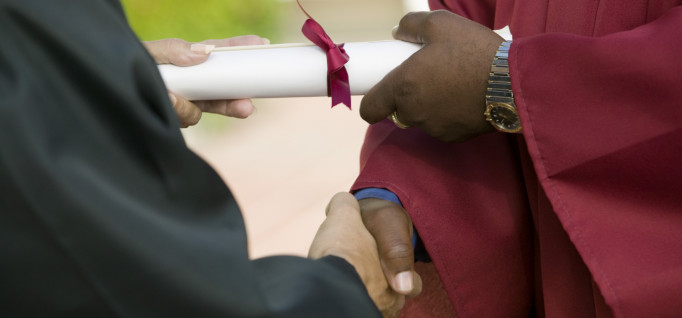Reverse-Transfer Programs Require University Collaboration
By Rebecca L. Weber
February 27, 2015
Maricopa Community College District makes headway on the road to completion.
In the 2013–14 school year, Maricopa Community Colleges had about 23,000 students who left without receiving an associate degree. Yet it’s estimated that some 16,000 of those students transferred to one of three public universities — Arizona State University, Northern Arizona University or the University of Arizona — and have already earned enough credits for an associate degree.
As the largest community college district in the country, and with long-existing ties to three public universities in the state, Maricopa is uniquely positioned to transform completion patterns, with the use of extensive data-tracking systems and funding from the Helios Foundation.
The foundation has worked on reverse-transfer programs at other institutions and invited Maricopa to discuss best practices and to look at what other states were doing to identify and motivate students who have earned degrees.
After a year of planning, and now with recently received funding, Maricopa is hiring staff to evaluate the large number of students who qualify. The $500,000 Helios grant will enable Maricopa to partner with the public universities to contact students, who can then request transcripts for evaluation.
In the meantime, thanks to local publicity, the colleges have received a flood of inquiries from eligible students interested in obtaining the degrees they’ve earned. Students are directed to a website that guides them through the process, and transcripts are typically evaluated within a week.
The key to completion
Rose Rojas, director at the Center for Curriculum and Transfer Articulation at Maricopa, says a team is looking into why eligible students don’t apply for already-earned degrees; the investigation could hold the key to improving completion rates.
“We don’t know why they don’t do the evaluation to see how close they are to earning degrees,” Rojas says. “We’re working on multiple strategies to capture those students before they leave, or once they leave, to see if we can go ahead and implement a reverse-transfer arrangement to award a degree.”
For traditional students, arrangements with universities tie incentives to completion, such as guaranteed transfer admission and eligibility for scholarships.
And reaching out to students about the benefits of an associate degree and the value of earning a credential are things that they are working to improve, too. “For whatever reason, students may not be able to finish their bachelor’s. Sometimes life happens,” Rojas says. Those who have an associate degree in hand — especially in fields like occupational tech — are better positioned to land jobs or promotions.
Partners for reverse-transfer programs
An article about a partnership between El Paso Community College and the University of Texas at El Paso initially sparked Maricopa’s interest. “They were at the forefront of reverse transfer,” Rojas says, adding that Maricopa contacted them to find out what worked and what didn’t.
“They really helped us to identify those strategies that will work for our district,” Rojas says. One tactic that has already boosted engagement: emphasizing the value of completion in student messaging.
In addition to the Helios-funded initiatives with the three public universities, Maricopa also has a relationship with private Grand Canyon University and hopes to partner with other institutions in the future.
“They have a strong, dedicated team to help us. You need commitment from the universities,” Rojas says. “It cannot just be that the community college absorbs the entire process. The universities have to dedicate resources for this to work. It’s truly a joint, collaborative process.”
Does your college have a reverse-transfer program in place? What strategies have been most effective in connecting with students? Tell us in the Comments.













